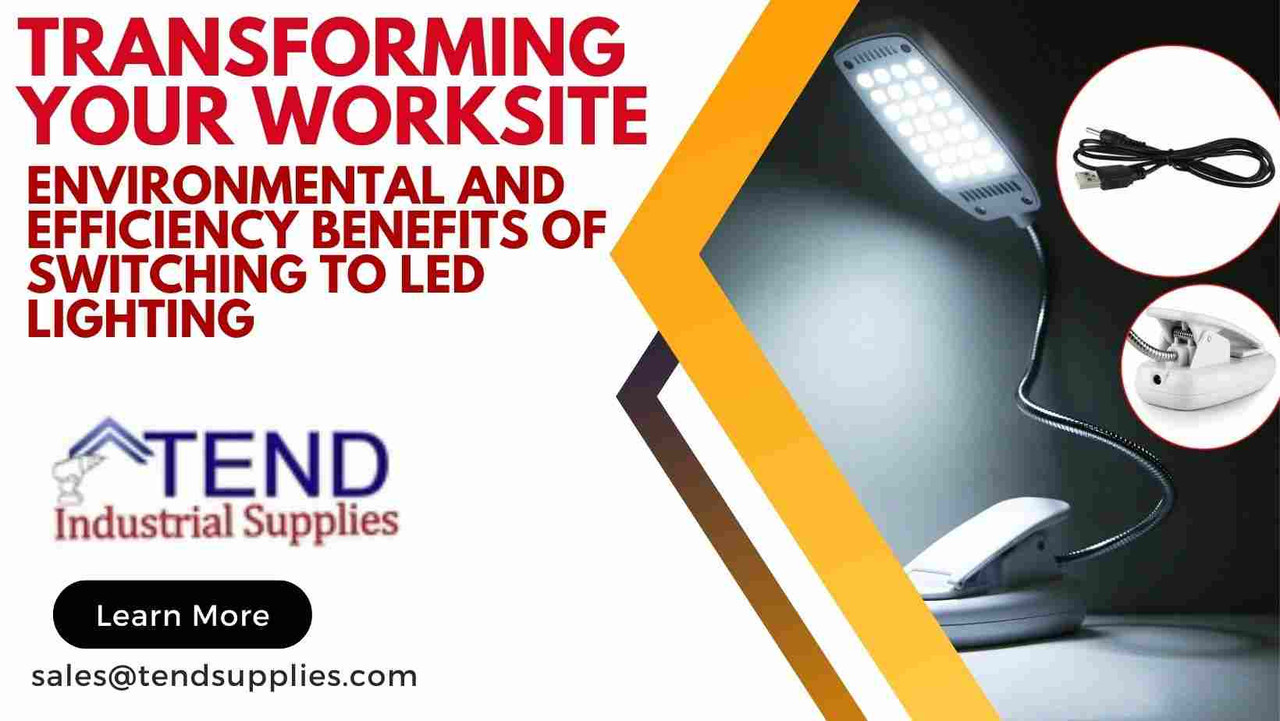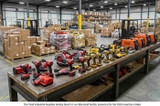Transforming Your Worksite: Environmental and Efficiency Benefits of Switching to LED Lighting
Transforming Your Worksite: Environmental and Efficiency Benefits of Switching to LED Lighting
Worksite illumination is an indispensable aspect of any project. Traditional lighting methods have been used on worksites for years, yet they often suffer from drawbacks such as high energy consumption, frequent maintenance needs, and limited lifespan. Recently, however, a transformative shift has been happening in the lighting industry as Light Emitting Diode (LED) technology continues to grow in popularity and adoption. Due to their exceptional energy efficiency and durability, LEDs are rapidly becoming the favored lighting solution for worksites.
The Efficiency Benefits of LED Lighting
The most compelling benefit of LED lighting is its superior energy efficiency. Compared to traditional lighting sources such as incandescent or halogen lamps, LEDs consume significantly less power to provide the same, if not better, illumination level. For instance, a typical LED light uses about 75% less energy than an incandescent bulb. This remarkable energy-saving capability translates directly into cost savings on utility bills, a crucial consideration for any business.
Furthermore, LEDs boast a markedly longer lifespan compared to their traditional counterparts. The average LED light has a lifespan of around 25,000 to 50,000 hours, dwarfing the typical incandescent bulb's lifespan of 1,000 hours. This extended life means fewer bulb replacements, reducing maintenance costs and downtime on worksites.
- Energy efficiency:LED lighting uses less energy to produce the same amount of light compared to traditional incandescent lights, which can help reduce your environmental impact and lower your electric bills
- Bright, intense light: LEDs do not compromise brightness or intensity for energy efficiency, making them an excellent addition to workspaces where bright light contributes to productivity
- Adaptable and directional: LED lights are adjustable and directional, which means they can be used in a variety of settings and can be directed where they are needed most
- Dimmable: LED lights can be dimmed, which allows for greater control over lighting levels and can help save energy
Real-world examples
Several real-world examples underscore the advantages of transitioning to LED lighting, such as Sarah's heroic productivity rise due to LED rechargeable light she had used. For instance, a construction site in California reported a 60% reduction in energy costs after replacing all halogen work lights with LED options. Additionally, a manufacturing plant in Ohio noted fewer disruptions due to lighting maintenance after shifting to LEDs, leading to increased productivity.
Transitioning from traditional lighting to LED technology on worksites brings significant efficiency benefits. LED lights consume less energy, require fewer replacements, and reduce maintenance downtime, enhancing operational efficiency and lower costs. As more businesses recognize these benefits, the shift toward LED lighting in the industrial sector will likely continue to accelerate. It's clear that LED technology is not just lighting the way for the future; it's proving to be an efficient and cost-effective solution for today's worksites.
The Environmental Benefits of LED Lighting
LED lighting does not only offer financial and operational advantages; it also comes with significant environmental benefits. Traditional incandescent or halogen lamps convert a substantial portion of their energy into heat, not light, leading to unnecessary energy waste and subsequent carbon emissions. In contrast, LEDs convert most of their power directly into light, which leads to a decrease in greenhouse gas emissions. Lower energy consumption of LED lights means fewer carbon emissions are generated.
Additionally, the longevity of LED lights significantly reduces waste. As LEDs can last up to 25 times longer than incandescent bulbs, the frequency of replacements, and thus the quantity of waste generated, dramatically decreases. LED lights also have the advantage of being free from harmful substances. Unlike traditional bulbs that contain mercury, a toxin dangerous to the environment and human health, LEDs do not have any such hazardous materials, enhancing their eco-friendly profile.
Summarily Environmental Benefits include:
- Lower energy consumption: LED lighting uses up to 85% less energy than traditional bulbs, which results in savings in electricity costs and reduces the carbon footprint
- Reduced waste: Traditional lighting wastes energy through heat, whereas efficient lighting produces less heat and uses less energy to generate the same amount of light
- Reduced carbon footprint: LED lights contribute to the least amount of carbon dioxide in the atmosphere, making them the best for the environment
- Longer lifespan: LED lighting lasts up to six times longer than other lights, which reduces the requirement for recurrent replacements and leads to fewer lights being used and fewer resources being consumed
Steps to Transition to LED Lighting on Your Worksite
Transitioning to LED lighting on your worksite begins with performing an audit of your current lighting situation. This involves identifying areas that require improvement and areas where LED lighting could bring about the most benefits. It's essential to consider both indoor and outdoor lighting, the nature of tasks performed in different areas, and the current cost of lighting those areas.
Once you've identified potential areas for transition, the next step is to select the right LED products that match your specific needs. This may involve consulting with a lighting professional who can advise on the most suitable products for your worksite. Once your LED lights are in place, remember that while these bulbs have a significantly longer lifespan, they still require proper installation and maintenance to ensure they deliver their full benefits over their expected life. Investing in LEDs is investing in the future of your worksite, the health of the environment, and the financial stability of your business.
Potential Challenges and Solutions
Despite the numerous benefits of switching to LED lighting, it's important to acknowledge potential obstacles that might be encountered along the way. The initial cost is one of the main challenges businesses face when transitioning. LEDs are more expensive upfront than traditional light sources. However, viewing this expense as an investment that will pay off in the long term through energy savings and reduced maintenance costs is essential.
Another potential challenge is the issue of retrofitting. Transitioning from traditional lighting systems to LEDs can involve significant alterations to existing infrastructure, which can be complicated and costly. Some older buildings might have fixtures incompatible with LED lights, necessitating their replacement.
However, these challenges are surmountable. Businesses can plan a phased approach to manage initial costs, starting with areas that consume the most energy or need frequent bulb replacements. There are also financing and incentive programs offered by utility companies and government agencies that can help offset the initial investment.
Regarding retrofitting issues, it's worth noting that the LED lighting industry has evolved to produce a vast array of products designed to fit into existing light fixtures, minimizing the need for significant infrastructural changes. Consulting with a lighting or energy expert can also provide tailored solutions that address the unique retrofitting needs of your worksite. By being aware of these potential challenges and planning for them, businesses can successfully navigate the transition to LED lighting and reap its manifold benefits.
Buy Maxxeon worksite lights from us









